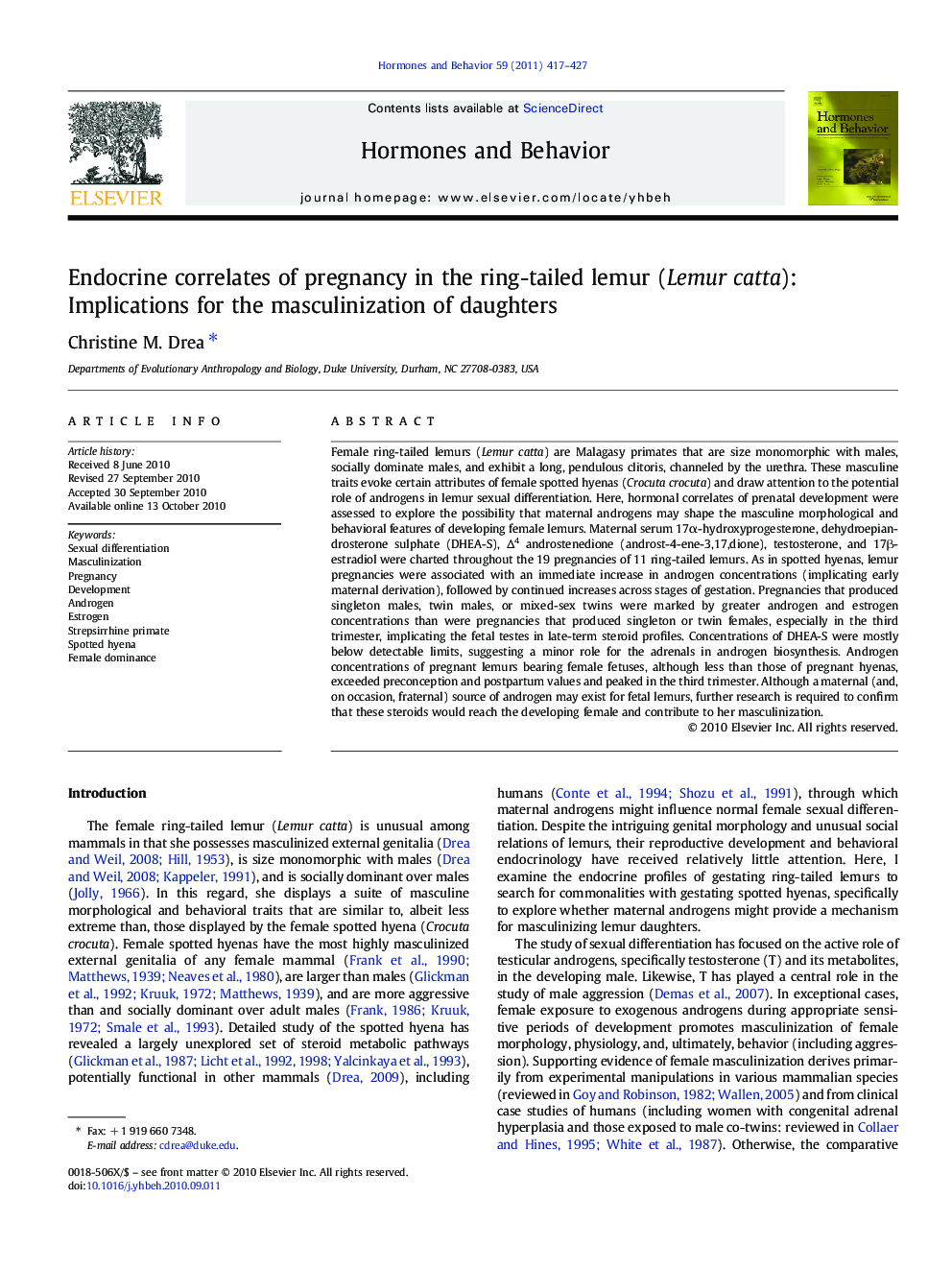| کد مقاله | کد نشریه | سال انتشار | مقاله انگلیسی | نسخه تمام متن |
|---|---|---|---|---|
| 323171 | 540522 | 2011 | 11 صفحه PDF | دانلود رایگان |

Female ring-tailed lemurs (Lemur catta) are Malagasy primates that are size monomorphic with males, socially dominate males, and exhibit a long, pendulous clitoris, channeled by the urethra. These masculine traits evoke certain attributes of female spotted hyenas (Crocuta crocuta) and draw attention to the potential role of androgens in lemur sexual differentiation. Here, hormonal correlates of prenatal development were assessed to explore the possibility that maternal androgens may shape the masculine morphological and behavioral features of developing female lemurs. Maternal serum 17α-hydroxyprogesterone, dehydroepiandrosterone sulphate (DHEA-S), ∆4 androstenedione (androst-4-ene-3,17,dione), testosterone, and 17β-estradiol were charted throughout the 19 pregnancies of 11 ring-tailed lemurs. As in spotted hyenas, lemur pregnancies were associated with an immediate increase in androgen concentrations (implicating early maternal derivation), followed by continued increases across stages of gestation. Pregnancies that produced singleton males, twin males, or mixed-sex twins were marked by greater androgen and estrogen concentrations than were pregnancies that produced singleton or twin females, especially in the third trimester, implicating the fetal testes in late-term steroid profiles. Concentrations of DHEA-S were mostly below detectable limits, suggesting a minor role for the adrenals in androgen biosynthesis. Androgen concentrations of pregnant lemurs bearing female fetuses, although less than those of pregnant hyenas, exceeded preconception and postpartum values and peaked in the third trimester. Although a maternal (and, on occasion, fraternal) source of androgen may exist for fetal lemurs, further research is required to confirm that these steroids would reach the developing female and contribute to her masculinization.
Research highlights
► Lemur pregnancies are associated with increased maternal androgen concentrations.
► Maternal hormone profiles in lemurs reliably predict fetal sex.
► Lemur mothers have greater steroid concentrations with male than female fetuses.
► Low DHEAS suggests a minor role for the adrenals in androgen biosynthesis.
► Maternal masculinization of daughters may explain female dominance in lemurs.
Journal: Hormones and Behavior - Volume 59, Issue 4, April 2011, Pages 417–427